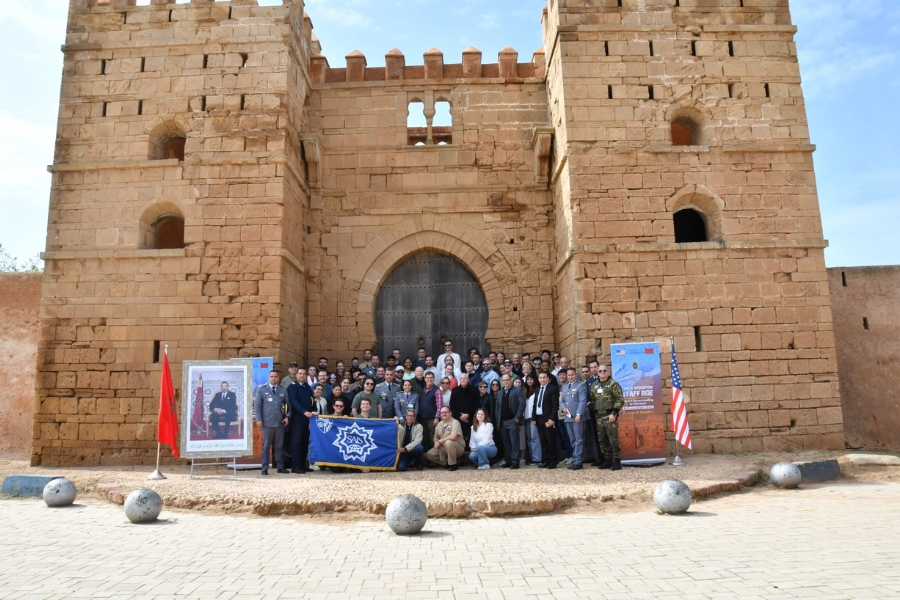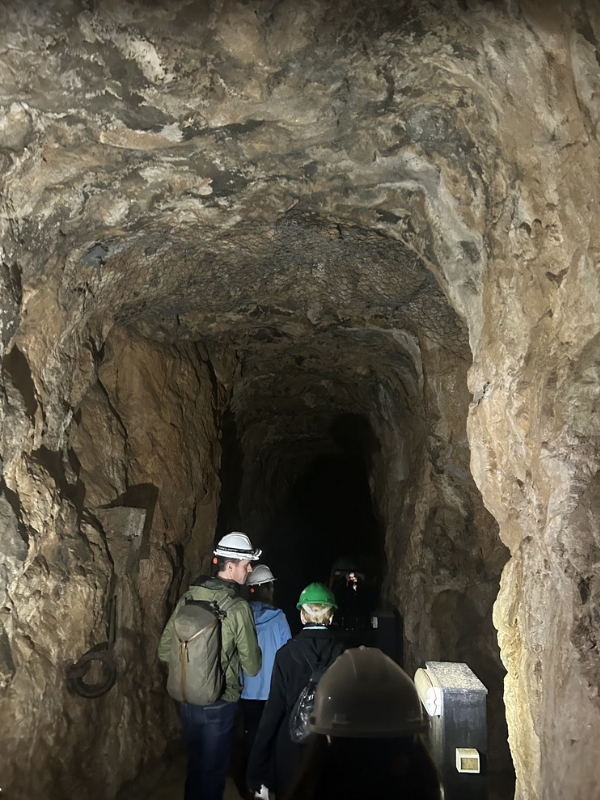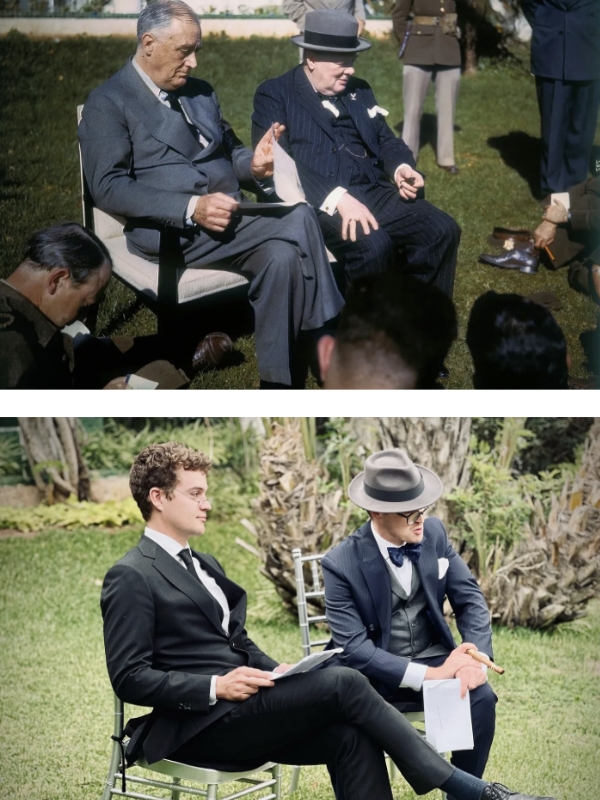SAIS Students Relive World War II History in Gibraltar and Morocco

In March 2025, 50 Johns Hopkins SAIS students and faculty embarked on an ambitious international staff ride to Gibraltar and Morocco to study the World War II-era Operation Torch and the subsequent Casablanca Conference.
In November 1942, the United States and Great Britain launched Operation Torch and invaded Vichy-controlled North Africa, the first U.S. action in the European theater. Upon its initial success, U.S. President Franklin Delano Roosevelt, British Prime Minister Winston Churchill, and their staffs gathered in Casablanca, Morocco in January 1943 to hash out the Allies’ strategy for the rest of the war.The staff ride is an experiential learning method derived from military tradition, where participants step into the shoes of key figures in a battle, campaign, or conference and give “stands” from the perspectives of these figures in relevant historical locations. The goal is to see the problem as these figures saw it, at the moment they experienced it, in the location where it happened—in an attempt to empathize with them and understand their decision making.
During the 2024-2025 academic year, 12 SAIS students conceptualized, planned, and implemented the research and logistics needed to bring 50 people from Washington, D.C. to retrace the steps of 50 historical figures who participated in Operation Torch. The staff ride group journeyed to Gibraltar, across the strait to Tangier, Morocco, then south to Kenitra, Casablanca, and Marrakech. The team explored historical fortresses, bases, and monuments, and engaged with the U.S., British, and Moroccan militaries, as well as with U.S. diplomats.

In Gibraltar, the staff riders explored the tunnels in the towering Rock, gazing out toward Spain from observation holes tunneled hundreds of feet high. The team also gave presentations in U.S. Army General Dwight D. Eisenhower’s operational headquarters, deep in the limestone tunnels where he commanded Operation Torch in November 1942. Here, students discussed the intelligence and planning dynamics in the leadup to Torch and the question of Vichy resistance to the operation.
After crossing the Strait of Gibraltar by ferry, the students and faculty visited the Tangier American Legation, the oldest U.S. diplomatic site in the world, and then headed south to Kenitra to walk through Kasbah Madhiya, a 16th-century Portuguese fort from which the Vichy troops defended a beach against disembarking American soldiers. From this fort, the team gazed upon the very beaches where the United States first entered the European theater of World War II. The Moroccan Military History Directorate generously gave the group a warm welcome, a tour, and hosted a reception in the Kasbah. Here, the students and Moroccan military officials discussed U.S.-Moroccan relations and dissected the effort of transporting 35,000 soldiers across the Atlantic for a surprise amphibious assault.

In Casablanca, the group ate lunch at Villa Mirador, Churchill’s residence during the Casablanca Conference and the current residence of the U.S. consul general to Casablanca. Consul General Marissa Scott generously opened her historic home for the team and offered insightful remarks on the history of the U.S.-Moroccan relationship.
The day concluded at Dar Es Saiida, a house neighboring Villa Mirador where Roosevelt made the monumental declaration of unconditional surrender as the Allied policy to end World War II. This day also highlighted the importance of staff planning during the Casablanca Conference, and the contrast between Churchill’s involved leadership style and Roosevelt’s more aloof approach.
As Churchill said to Roosevelt at the end of the Casablanca Conference, "You cannot come all this way to North Africa without seeing Marrakech.” The staff ride therefore ended in Marrakech, focusing on the colonial experience of Moroccans during Operation Torch and the perspectives of advisors to the sultan who helped pave the way for Moroccan independence.
The 2025 International Staff Ride was multi-disciplinary, covering grand strategy, diplomacy, intelligence, alliances, and the Moroccan experience. The team, composed of students from all focus areas at SAIS, explored this experience from the perspectives of generals, heads of state, common soldiers, diplomats, activists, and ordinary citizens. Students learned the outsize impact that individuals’ decisions can have on the course of history.
Most importantly, this staff ride was an intense exercise in empathy. A staff rider must try to see a difficult problem set through the eyes of people from all sides of a conflict, all cultural perspectives, and all backgrounds. This is only possible by placing oneself in the moment they lived, at the place where they lived it. This is the power of the SAIS staff ride.
Enjoyed reading Students Relive World War II History in Gibraltar and Morocco? Learn more about what Washington DC campus has to offer.
Back to Beyond the Classroom Stories